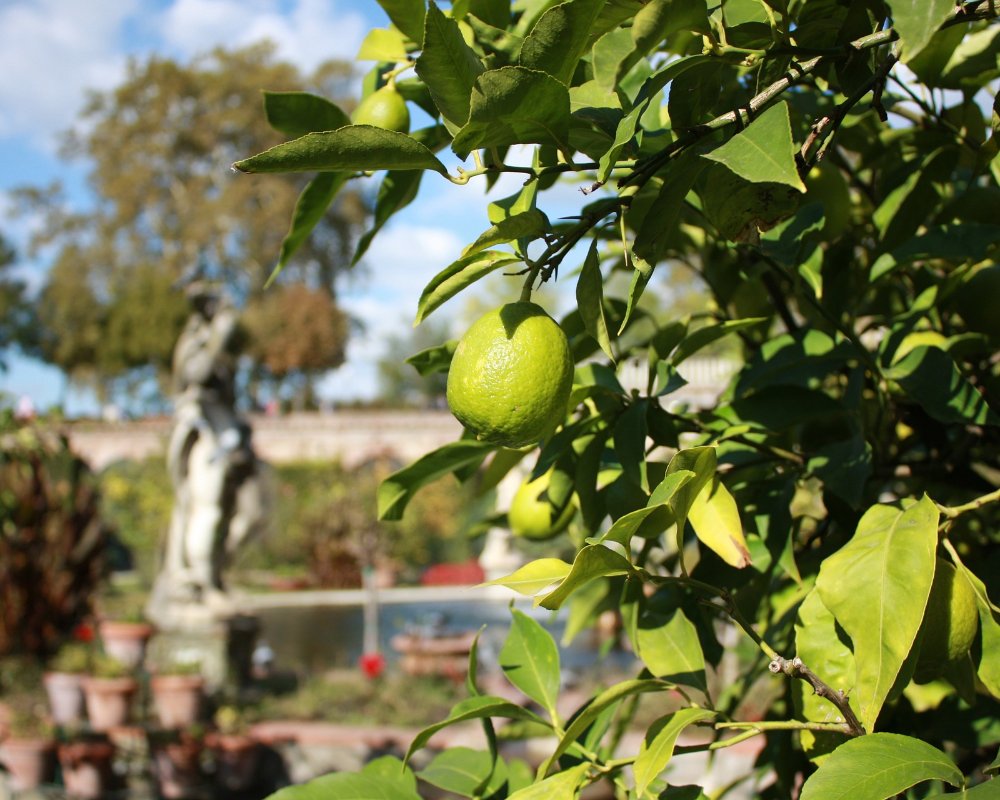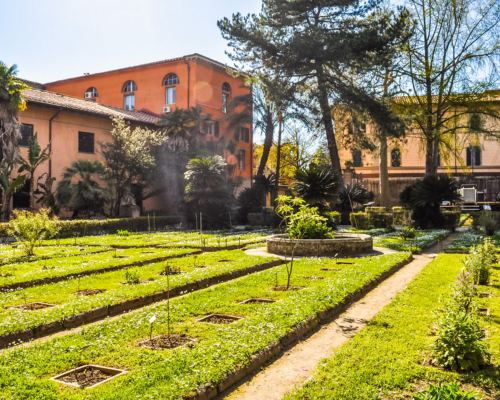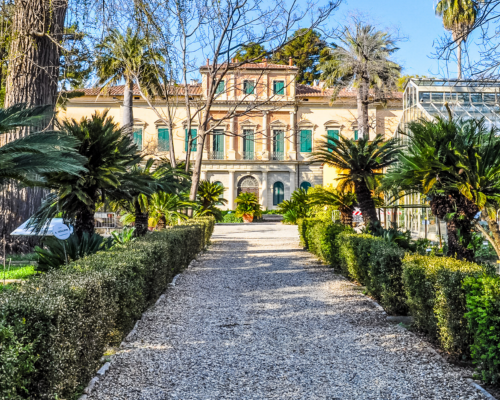Some tips on the best places to admire and breathe in spring
Spring is one of the seasons in which the Tuscan territory is at its best. At this time, natural parks, botanical, English and Italian gardens are filled with sometimes unexpected scents and colors that we are sure will delight you.
In this two-day travel proposal that's ideal for a weekend trip, we give you some advice on the best places to admire and breathe in spring between Pisa and Lucca.
We begin our journey from Pisa. The city famous for the Leaning Tower and Piazza dei Miracoli has many secrets that are worth discovering. One of these is the wonderful Botanical Garden, the start of our itinerary.
The Botanical Garden of Pisa is the oldest university garden in the world. It was founded in 1543 by the naturalist Luca Ghini and hosts many plants from all over the globe. You can admire African and American succulents, the orchiedee, the aromatic plants of the Mediterranean and centuries-old trees. In spring, camellias, hydrangeas and the majestic magnolia are unmissable.
After finishing our visit, we move towards the Migliarino, San Rossore and Massaciuccoli Park, perhaps the most important naturalistic oasis of the Tuscan coast, extending between the provinces of Pisa and Lucca. Our visit starts from Tenuta San Rossore, a few kilometers from the center of Pisa. We recommend you take the Sabrina Bulleri path, allowing you to reach the wildlife observatory through a beautiful oak forest.
Alternatively, we could continue our day by moving further north to reach the Lipu Oasis of Lake Massaciuccoli, also part of the Migliarino, San Rossore and Massaciuccoli Park. The Oasis is a protected area that allows you to immerse yourself completely in nature.
The lake is one of the best places for birdwatching in Tuscany and in spring, with a little luck, you will be able to spot a very rare species of heron, the bittern or star heron, with a large number of specimens to be found here.
We begin our journey from Pisa. The city famous for the Leaning Tower and Piazza dei Miracoli has many secrets that are worth discovering. One of these is the wonderful Botanical Garden, the start of our itinerary.
The Botanical Garden of Pisa is the oldest university garden in the world. It was founded in 1543 by the naturalist Luca Ghini and hosts many plants from all over the globe. You can admire African and American succulents, the orchiedee, the aromatic plants of the Mediterranean and centuries-old trees. In spring, camellias, hydrangeas and the majestic magnolia are unmissable.
After finishing our visit, we move towards the Migliarino, San Rossore and Massaciuccoli Park, perhaps the most important naturalistic oasis of the Tuscan coast, extending between the provinces of Pisa and Lucca. Our visit starts from Tenuta San Rossore, a few kilometers from the center of Pisa. We recommend you take the Sabrina Bulleri path, allowing you to reach the wildlife observatory through a beautiful oak forest.
Alternatively, we could continue our day by moving further north to reach the Lipu Oasis of Lake Massaciuccoli, also part of the Migliarino, San Rossore and Massaciuccoli Park. The Oasis is a protected area that allows you to immerse yourself completely in nature.
The lake is one of the best places for birdwatching in Tuscany and in spring, with a little luck, you will be able to spot a very rare species of heron, the bittern or star heron, with a large number of specimens to be found here.
We spend the second day in Lucca and Capannori, discovering the wonderful villas in the area and their gardens.
As a first stop, however, we recommend that you visit the Botanical Garden of Lucca, an island of biodiversity in the city center. Commissioned by the Duchess Maria Luisa of Bourbon, which began in 1820 and houses centuries-old trees with even a majestic appearance of the Lebanese cedar. Don't miss the pond with its water lilies and camellias.
At the end of the visit, we move out of the city to visit a splendid villa. Choose between the Villa Reale di Marlia, Villa Grabau and Villa Oliva. The magnificence of the buildings and gardens is awe-inspiring.
The Villa Reale di Marlia, once the residence of Elisa Baciocchi, Napoleon's sister, extends over 16 hectares with hedges, flower beds, a beautiful Italian garden, a Spanish garden, a lake and the wonderful Viale delle Camellie (avenue of cammellias).
Villa Grabau is entirely furnished with period furniture and paintings and surrounded by a 9 hectare botanical park. Don't miss the spaces of the Limonaia, a lemon greenhouse dating back to 1600 and the Teatrino di Verzura. The Italian garden is home to centuries-old citrus trees, while in the English garden there are rare tree species and monumental trees.
Villa Oliva, built in the mannerist style of Lucca, is surrounded by a beautiful park with terraces, tree-lined avenues, holm oak hedges and many fountains.
In the afternoon, we head towards Capannori and reach Villa Torrigiani. It dates back to the first half of the sixteenth century, but it was in the mid-seventeenth century that Nicolao Santini, ambassador of the Republic of Lucca at the court of the Re Sole (Sun King), transformed the structure into the luxurious residence that we can admire today. The villa, which has also been the location for the sets of many films, including the Marchese del Grillo with Alberto Sordi, has a beautiful French garden. Going past rows of cypresses, flower beds and hedges, you can reach the Nymphaeum of the Winds, a beautiful grotto with statues, water features and mosaics.
Alternatively, we can spend our second afternoon discovering spring in Pisa and Lucca at Villa Mansi. Inside, you can discover the canvases and frescoes of the Lucca painter Stefano Tofanelli, but what interests us particularly is the garden, with its fountains and statues by Filippo Juvarra. Juvarra removed the Italian garden to make room for the English park where still today there are beautiful oaks and yews, a bamboo grove and the queen of every Tuscan spring: the camellia.
We spend the second day in Lucca and Capannori, discovering the wonderful villas in the area and their gardens.
As a first stop, however, we recommend that you visit the Botanical Garden of Lucca, an island of biodiversity in the city center. Commissioned by the Duchess Maria Luisa of Bourbon, which began in 1820 and houses centuries-old trees with even a majestic appearance of the Lebanese cedar. Don't miss the pond with its water lilies and camellias.
At the end of the visit, we move out of the city to visit a splendid villa. Choose between the Villa Reale di Marlia, Villa Grabau and Villa Oliva. The magnificence of the buildings and gardens is awe-inspiring.
The Villa Reale di Marlia, once the residence of Elisa Baciocchi, Napoleon's sister, extends over 16 hectares with hedges, flower beds, a beautiful Italian garden, a Spanish garden, a lake and the wonderful Viale delle Camellie (avenue of cammellias).
Villa Grabau is entirely furnished with period furniture and paintings and surrounded by a 9 hectare botanical park. Don't miss the spaces of the Limonaia, a lemon greenhouse dating back to 1600 and the Teatrino di Verzura. The Italian garden is home to centuries-old citrus trees, while in the English garden there are rare tree species and monumental trees.
Villa Oliva, built in the mannerist style of Lucca, is surrounded by a beautiful park with terraces, tree-lined avenues, holm oak hedges and many fountains.
In the afternoon, we head towards Capannori and reach Villa Torrigiani. It dates back to the first half of the sixteenth century, but it was in the mid-seventeenth century that Nicolao Santini, ambassador of the Republic of Lucca at the court of the Re Sole (Sun King), transformed the structure into the luxurious residence that we can admire today. The villa, which has also been the location for the sets of many films, including the Marchese del Grillo with Alberto Sordi, has a beautiful French garden. Going past rows of cypresses, flower beds and hedges, you can reach the Nymphaeum of the Winds, a beautiful grotto with statues, water features and mosaics.
Alternatively, we can spend our second afternoon discovering spring in Pisa and Lucca at Villa Mansi. Inside, you can discover the canvases and frescoes of the Lucca painter Stefano Tofanelli, but what interests us particularly is the garden, with its fountains and statues by Filippo Juvarra. Juvarra removed the Italian garden to make room for the English park where still today there are beautiful oaks and yews, a bamboo grove and the queen of every Tuscan spring: the camellia.


